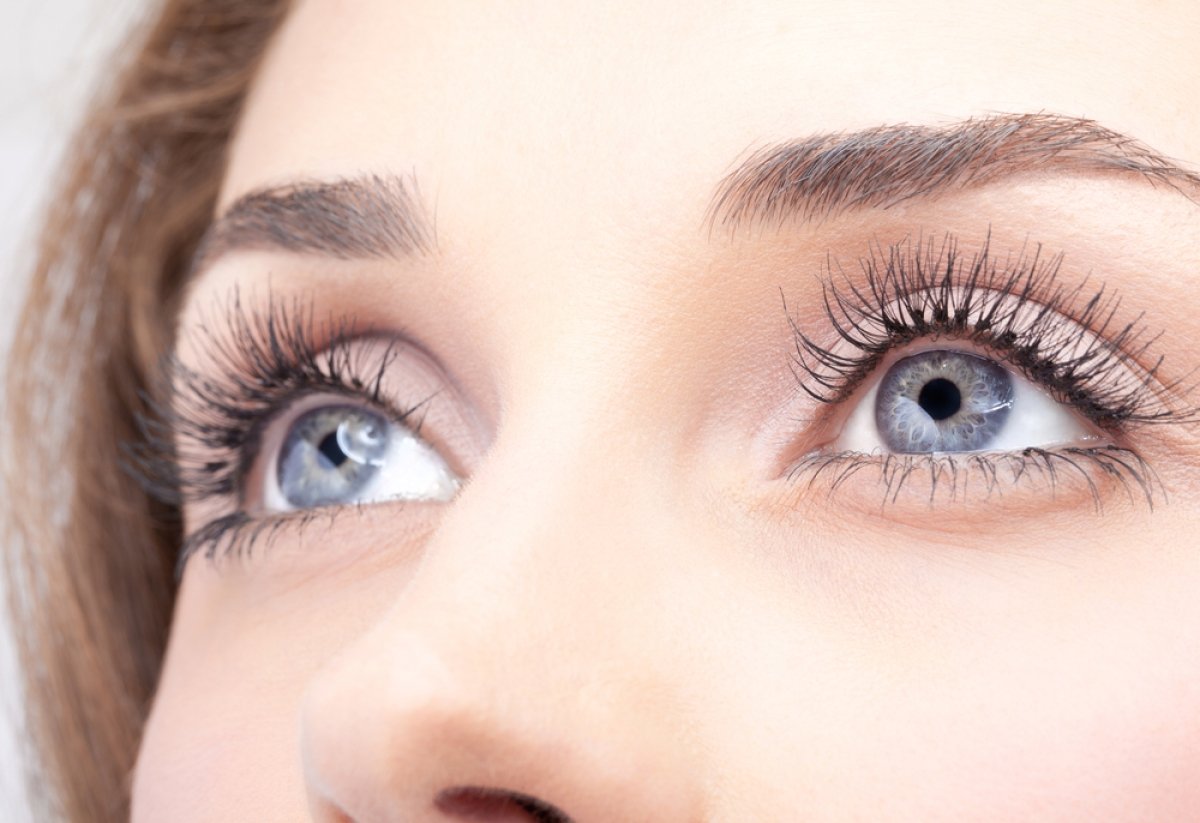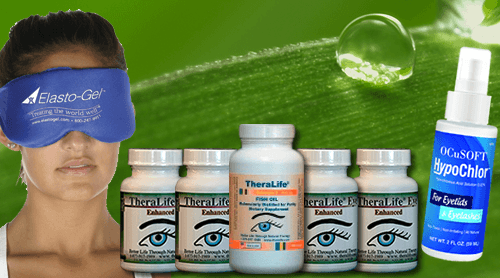To effectively manage blepharitis with TheraLife's products, it's important to focus on their comprehensive approach to eye health. TheraLife offers a range of natural supplements designed to reduce inflammation and improve eye moisture, directly addressing the root causes of blepharitis. Their products are formulated to enhance tear production and maintain optimal eye health, reducing the need for over-the-counter medications. Additionally, TheraLife's emphasis on lifestyle changes, such as stress management and dietary adjustments, complements their product line, providing a holistic approach to managing blepharitis. By incorporating TheraLife's solutions, customers can experience relief from symptoms and minimize flare-ups, leading to improved overall eye comfort and health.
Key Takeaways
- Proper eyelid hygiene with diluted baby shampoo or eyelid cleansers is essential for managing blepharitis.
- Prescription medications like azithromycin and corticosteroid eye drops effectively reduce persistent inflammation and bacterial load.
- Innovative therapies such as IPL and LipiFlow improve gland function and tear film stability.
- Over-the-counter options, including artificial tears and topical antibiotics, help alleviate symptoms.
- Consultation with an eye care professional is crucial for persistent symptoms or vision changes.
Understanding Blepharitis: Causes and Symptoms
Blepharitis, often a chronic condition, can greatly impact eyelid health due to inflammation. This inflammation results from bacterial colonization or malfunctioning oil glands.
Many misconceptions surround blepharitis, such as assuming it's solely due to poor hygiene or contagious. It's essential to understand that while hygiene plays a role, factors like seborrheic dermatitis, rosacea, and allergies are significant risk factors.
Symptoms often include redness, itching, and scaling of the eyelid margins. You might also notice a gritty sensation in the eyes, blurred vision, or even eyelash loss. Identifying these symptoms early is important for effective management.
Recognize that blepharitis isn't infectious, but managing underlying conditions can mitigate risks, guiding you towards more effective treatments. Demodex mites are another potential cause of blepharitis, as their presence on the eyelashes can lead to inflammation and irritation.
The Importance of Proper Eyelid Hygiene
Maintaining eyelid hygiene is essential in managing blepharitis effectively. Proper eyelid care minimizes inflammation and reduces symptoms like redness and irritation. Your hygiene routine should involve precise steps to guarantee ideal results.
Start by gently cleansing your eyelids using a recommended cleansing solution or diluted baby shampoo. This helps remove debris and excessive oils that contribute to blepharitis.
Incorporate these steps into your daily routine:
- Thoroughly cleanse: Use a clean cotton pad or swab to apply the solution, wiping from the inner to the outer corner of your eyelid.
- Consistent application: Perform this routine at least twice daily to maintain cleanliness and prevent flare-ups.
- Avoid contamination: Always wash your hands before and after eyelid care to avoid introducing bacteria.
Adhering to this routine enhances eyelid health. Consider using specialized eyelid cleansers such as Avenova Eyelid Cleanser that have proven effective in managing blepharitis by reducing microbial load and ocular surface inflammation.
Warm Compresses: An Effective First Step
While dealing with blepharitis, applying warm compresses is an effective initial step in treatment. The warm compresses benefits include reducing eyelid inflammation and loosening crusts formed around the eyelashes.
By softening the clogged oil in the meibomian glands, warm compresses facilitate better gland function, contributing to overall eyelid health. Regular assessment of chalazion size provides insights into the healing process and informs necessary adjustments in treatment plans.
To maximize efficacy, follow precise application techniques. Use a clean, soft cloth soaked in warm water, ensuring it's not too hot to prevent burns.
Apply it gently to closed eyelids for 5-10 minutes, maintaining consistent warmth. Reheat the cloth as needed to sustain temperature.
Perform this routine twice daily for best results. Adhering to these steps can greatly improve blepharitis symptoms, providing a solid foundation for further treatment.
Exploring Over-the-Counter Treatments
When managing blepharitis, you can consider several over-the-counter treatments to alleviate symptoms effectively. Topical antibiotic options help reduce bacterial load on the eyelid margins, while artificial tears provide lubrication to relieve dry eye discomfort. Additionally, lid scrub products are essential for maintaining eyelid hygiene and removing debris. To ensure the effectiveness of these treatments, it is crucial to maintain regular eyelid hygiene to minimize symptom recurrence.
Topical Antibiotic Options
For managing blepharitis, topical antibiotic options are an important consideration, even if over-the-counter treatments have limitations.
When exploring topical treatments, you'll find that prescription antibiotics often offer more targeted relief than what's available over-the-counter. These treatments aim to reduce bacterial load on the eyelids, a common contributor to inflammation.
- Erythromycin ointment: This antibiotic is frequently prescribed to combat Staphylococcus bacteria, a common cause of blepharitis.
- Bacitracin ointment: Known for its effectiveness against gram-positive bacteria, it's often used in mild cases.
- Azithromycin solution: Available as eye drops, this macrolide antibiotic offers both anti-inflammatory and antibacterial properties.
In addition to antibiotics, eye hygiene practices such as regular cleansing and warm compresses play a crucial role in managing blepharitis effectively.
Artificial Tears Benefits
Artificial tears provide a valuable option for those seeking over-the-counter relief from blepharitis symptoms. By offering effective eye lubrication, artificial tears can alleviate discomfort caused by dryness, irritation, and inflammation associated with this condition. You can use them regularly to maintain a stable tear film, essential for protecting the ocular surface and enhancing comfort.
Artificial tears work by mimicking natural tears, replenishing moisture, and promoting a balanced ocular environment. They help wash away irritants and stabilize the tear film, thereby reducing symptoms like redness and burning.
When selecting artificial tears, consider preservative-free options to minimize potential irritation. Integrating artificial tears into your daily routine can markedly improve your eye health and comfort, making them a practical choice for managing blepharitis symptoms effectively.
It is important to note that meibomian gland dysfunction is a common associated condition with blepharitis, which can exacerbate symptoms if not addressed.
Lid Scrub Products
Lid scrub products offer a targeted approach to managing blepharitis by addressing eyelid hygiene directly. These over-the-counter treatments promote effective lid hygiene techniques, vital in minimizing symptoms and preventing recurrence.
When selecting scrub products, consider these recommendations:
- Hypoallergenic formulations: Opt for products designed to minimize irritation, especially if you have sensitive skin or allergies.
- Pre-moistened pads: These convenient options guarantee consistent application, maintaining proper hygiene without additional preparation.
- Foaming cleansers: Foams offer thorough cleansing, penetrating eyelid margins to remove debris and excess oils efficiently.
Regular use of lid scrub products can significantly reduce the risk of bacterial infections, which are often a contributing factor to blepharitis flare-ups.
Lid scrub products are essential for anyone seeking to enhance their eyelid hygiene practices.
Prescription Medications for Persistent Cases
When over-the-counter treatments fail to alleviate blepharitis symptoms, prescription medications become vital for those with persistent cases. You might consider prescription options like topical antibiotics, such as azithromycin, due to their treatment efficacy in reducing bacterial load and inflammation. In cases where inflammation persists, ophthalmologists often prescribe corticosteroid eye drops. These reduce swelling and irritation effectively. Additionally, oral antibiotics like doxycycline or tetracycline are prescribed for their anti-inflammatory properties, particularly when meibomian gland dysfunction is evident. It's important to follow your healthcare provider's instructions rigorously to maximize results and minimize potential side effects. Always discuss any concerns or adverse reactions with your doctor to guarantee safe and effective management of blepharitis symptoms. Chronic or acute forms can develop, often triggered by systemic issues requiring interdisciplinary consultation. Prescription medications can greatly enhance your treatment outcomes.
The Role of Omega-3 Fatty Acids in Eye Health
You should understand that omega-3 fatty acids play an essential role in maintaining eye health by reducing inflammation and supporting the lipid layer of the tear film. These essential fatty acids can be sourced from fish oil, flaxseed oil, and chia seeds. Incorporating these into your diet may alleviate symptoms associated with blepharitis. Omega-3 fish oil can improve oil film production by meibomian glands, which alleviates dry eye symptoms.
Omega-3 Benefits Eyes
Although omega-3 fatty acids are often touted for their role in promoting overall health, their specific benefits for eye health and blepharitis treatment remain unsubstantiated by rigorous clinical evidence.
However, omega 3 supplementation benefits may include reducing inflammation, which theoretically could aid in managing blepharitis symptoms. You're encouraged to explore omega 3 food sources, like fatty fish and flaxseeds, as part of a balanced diet for general health.
To consider:
- Anti-inflammatory properties: Possibility of reducing ocular surface inflammation.
- Tear film stability: Potentially supports tear production, though clinical data is lacking.
- Dietary integration: Including omega-3 from natural sources may promote overall wellness.
TheraLife Omega-3 is purified via molecular distillation, ensuring removal of contaminants like mercury and PCBs, which supports its high purity and quality.
Despite the lack of conclusive evidence, incorporating omega-3s remains a consideration within a broader eye health strategy.
Fatty Acids Sources
A rich variety of omega-3 fatty acids sources exists, each contributing uniquely to eye health. Fatty fish, including salmon, mackerel, and sardines, are primary sources of these essential nutrients. They provide docosahexaenoic acid (DHA) and eicosapentaenoic acid (EPA), critical for maintaining ideal eye function.
Regular consumption of fatty fish can help reduce inflammation associated with blepharitis, promoting healthier ocular surfaces.
Flaxseed oil, another notable source, is rich in alpha-linolenic acid (ALA), a precursor to DHA and EPA. Though conversion rates of ALA to DHA/EPA are lower, flaxseed oil remains a valuable alternative for those avoiding fish.
Integrating these omega-3-rich foods into your diet could considerably enhance eye health, addressing underlying factors of blepharitis.
Innovative Therapies: IPL and LipiFlow
While traditional methods for treating blepharitis often focus on symptom management, innovative therapies like Intense Pulsed Light (IPL) and LipiFlow are gaining attention for their potential to target underlying causes.
IPL therapy utilizes light pulses to reduce inflammation and improve meibomian gland function, addressing the root of gland dysfunction. This treatment is particularly effective for evaporative dry eye, a common blepharitis symptom.
LipiFlow treatment, on the other hand, combines heat and physical massage to unclog blocked glands, restoring natural oil flow.
- IPL Therapy: Reduces gland inflammation, enhancing meibomian functionality.
- LipiFlow Treatment: Employs thermal pulsation to relieve gland blockages.
- Clinical Outcome: Both therapies have shown promising results in improving tear film stability and patient comfort.
These advanced approaches offer promising alternatives to traditional blepharitis management.
Lifestyle Adjustments to Reduce Flare-Ups
To minimize blepharitis flare-ups, incorporate daily eyelid hygiene into your routine.
Guarantee your diet is balanced, emphasizing nutrients that support eye health.
Implement stress management techniques to further reduce the incidence of symptoms.
Daily Eyelid Hygiene
Maintaining proper eyelid hygiene is essential for managing blepharitis and reducing flare-ups. Implementing a consistent hygiene routine can greatly alleviate symptoms.
Start by performing an eyelid massage to help clear blocked glands. Use clean fingers or a soft pad, applying gentle pressure along the eyelid margin. This daily practice encourages glandular function and reduces irritants.
Incorporate these steps into your hygiene routines:
- Warm Compresses: Apply a warm compress to your eyelids for 5-10 minutes to loosen crusts and debris.
- Lid Scrubs: Use a mild, non-irritating cleanser to gently scrub the eyelid margins, removing bacteria and oils.
- Consistent Routine: Establish a regular schedule for eyelid care to maintain cleanliness and prevent symptom recurrence.
Adhering to these practices guarantees ideal eyelid health.
Balanced Diet Importance
Proper eyelid hygiene plays an essential role in managing blepharitis, but dietary choices greatly impact flare-up frequency as well. Nutrient absorption is vital for maintaining overall eye health, and specific dietary adjustments can reduce blepharitis symptoms.
Prioritize omega-3 fatty acids, found in fish and flaxseed, to decrease inflammation. Incorporate antioxidants like vitamins A, C, and E, which are abundant in fruits and vegetables, to protect ocular tissues.
Avoid excessive intake of processed foods and sugars, which can exacerbate inflammation and hinder nutrient absorption. Consider consulting a nutritionist to tailor a diet that supports eye health.
Stress Management Techniques
Although often overlooked, managing stress is essential in controlling blepharitis flare-ups. Stress reduction can greatly impact the frequency and severity of symptoms.
Integrating mindfulness practices into your daily routine can enhance your ability to manage stress effectively. Consider the following techniques:
- Mindfulness Meditation: Regular practice helps you focus on the present moment, reducing stress hormones that may exacerbate blepharitis.
- Deep Breathing Exercises: Engaging in controlled breathing lowers physiological stress responses, thereby minimizing potential triggers for flare-ups.
- Progressive Muscle Relaxation: This technique involves tensing and relaxing muscle groups in sequence, promoting relaxation and stress relief.
Implementing these strategies can help in maintaining a stable inflammatory state, reducing the likelihood of blepharitis exacerbations.
Prioritize stress management for ideal eye health.
Natural Remedies and Herbal Solutions
When addressing blepharitis, exploring natural remedies and herbal solutions can offer complementary benefits alongside conventional treatments. Herbal infusions like chamomile or green tea may soothe irritation. Essential oils such as tea tree oil can provide antimicrobial effects when used appropriately. It's essential to follow precise dilution guidelines to prevent adverse reactions.
Here's a quick reference table:
| Remedy | Benefits | Considerations |
|---|---|---|
| Chamomile Infusion | Reduces inflammation | Test for allergies |
| Green Tea Wash | Antioxidant properties | Use cooled, brewed tea |
| Tea Tree Oil | Antimicrobial effects | Dilute before applying |
Always make sure you're using high-quality, pure ingredients. While these solutions may alleviate symptoms, they should not replace medical advice or prescribed treatments. Consult a healthcare provider if symptoms persist.
When to Consult an Eye Care Professional
How do you know it's time to consult an eye care professional for blepharitis? Symptom awareness is essential. If your symptoms persist despite home treatments, worsen, or cause significant discomfort, seeking professional evaluation is necessary. Blepharitis can lead to complications if left untreated, so timely intervention is critical.
Consider professional consultation if you experience:
- Chronic redness, swelling, or pain: Persistent inflammation requires expert assessment.
- Vision changes: Any alteration in vision demands immediate attention to rule out serious issues.
- Recurring infections: Frequent infections suggest an underlying problem needing professional scrutiny.
An eye care professional can offer a thorough evaluation, tailored treatment options, and advice on preventing future episodes.
Don't wait for symptoms to escalate; early intervention guarantees better outcomes and prevents complications.
Frequently Asked Questions
Can Diet Changes Help Manage Blepharitis Symptoms?
Dietary adjustments can indeed help manage blepharitis symptoms.
By incorporating anti-inflammatory foods, you can actively reduce inflammation. Omega-3 fatty acids, found in fish and flaxseeds, play an essential role in inflammation reduction.
Avoiding processed foods and sugars may lead to symptom improvement. You should consider increasing your intake of leafy greens, nuts, and whole grains.
These changes can contribute to overall eyelid health, alleviating the discomfort associated with blepharitis.
Are Children Susceptible to Blepharitis?
Imagine a garden where weeds represent irritation. Children can be like this garden, susceptible to blepharitis. They might show child symptoms like red, itchy eyelids.
You need to tackle these with specific treatment options. Warm compresses and lid hygiene can act as your gardening tools, keeping the "weeds" at bay.
Sometimes, topical antibiotics or eye drops are necessary to maintain a healthy "garden." Always consult a pediatric ophthalmologist for precise management.
Does Stress Influence the Severity of Blepharitis?
Stress can indeed influence the severity of blepharitis. When you're stressed, your immune system may weaken, exacerbating inflammatory conditions like blepharitis.
Effective stress management is essential. Implementing techniques such as mindfulness or relaxation exercises can help maintain emotional health, potentially reducing flare-ups.
Prioritize your emotional well-being by identifying stressors and addressing them proactively. Consult a healthcare professional for personalized strategies that integrate stress management into your blepharitis treatment plan.
Can Makeup Aggravate Blepharitis?
Did you know that over 15% of blepharitis cases are exacerbated by poor makeup hygiene?
Using certain makeup types like oil-based products can indeed aggravate your blepharitis. If you've noticed increased irritation, examine your makeup routine.
Confirm proper hygiene by cleaning brushes regularly and choosing hypoallergenic options. Avoid sharing cosmetics and discard expired products.
These steps can help reduce inflammation and prevent further complications associated with blepharitis.
Are There Specific Vitamins Beneficial for Blepharitis?
You might be wondering if specific vitamins can help with blepharitis.
Vitamin supplements like omega fatty acids have shown potential benefits. Omega-3 fatty acids, found in fish oil, can reduce inflammation by stabilizing tear production. Adding omega fatty acids to your diet might alleviate symptoms.
However, consult your healthcare provider before starting any supplements to guarantee they're right for you, as individual needs vary and interactions may occur with existing medications.
Conclusion
In managing blepharitis, TheraLife's products offer a holistic approach to eye health, emphasizing natural treatments and lifestyle adjustments. TheraLife products provide consistent eyelid hygiene and relief from symptoms through natural ingredients, unlike conventional remedies. Their innovative formulas target the root causes of blepharitis, offering long-term solutions rather than temporary relief.
TheraLife's commitment to natural healing is evident in their comprehensive product range, which includes options for blepharitis, dry eyes, and related conditions. Customers benefit from a holistic approach, with emphasis on diet, lifestyle adjustments, and natural supplements that work synergistically to improve eye health. TheraLife's products are designed to reduce inflammation, enhance tear production, and support overall eye wellness, making them a valuable addition to one's eye care regimen.
By prioritizing natural ingredients and integrative care, TheraLife empowers customers to manage blepharitis effectively and sustainably. For those seeking a natural, long-term solution to blepharitis and related eye conditions, consulting TheraLife's offerings can provide the expertise and precision needed to navigate these challenges successfully. Remember, proactive care with TheraLife can prevent further complications, ensuring optimal eye health.




